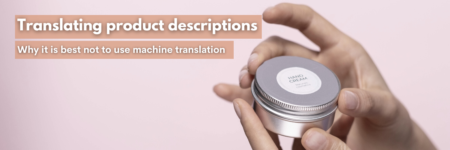3 Digital Marketing Trends in 2021
Pivot has been voted the marketing word of the year – and rightfully so. In basketball, it stands for a movement that allows the player holding the ball to move in any direction with one foot, while keeping the other in contact with the floor. The ability to change the direction is the very essence of pivot used in a business sense. This symbolism should not be surprising in such demanding times. Many companies were forced to re-purpose their business models in order to keep on providing services and stay in the market. This often involved launching or expanding online operation. What did the previous year teach us about digital marketing? What digital marketing trends and changes did the pandemic originate? Learn about 3 key trends for 2021.
1. Dynamic growth of the e-commerce industry
This is the backbone of all 2021 digital marketing trends: online sales increase year over year, and the global health emergency has additionally sped up these processes. It is estimated that in the US, e-commerce-related revenues will grow to $6.54 trillion by 2022 (this value was almost twice lower in 2019).

In 2020, 60.9% of Poles (17.6 million people) shopped online. According to some calculations, this figure could be even 10 percentage points higher. In comparison, 5 years ago this number was almost 20–30 p.p. lower (depending on the source).
At the Facebook Marketing Summit 2020, one of the speakers, Leigh Thomas, said that within 2 months, due to the pandemic, e-commerce had undergone a growth that would require up to 10 years in “pre-pandemic” circumstances. What challenges will you face because of the dynamic digitisation of retail?
Omnichannel
If you run your business both offline and online, prioritise synergising these two channels. Update and analyse data to draw correct conclusions.
- Keep consistency: not only as regards content or visual identification in itself, but also between these two areas.
- Customers want as many brand touchpoints as possible and wish to be able to switch between the channels at their discretion. Customer journey may be devious, so you should brace for any scenario.
- Prepare product descriptions and make sure they’re truthful and exhaustive. At the beginning of the pandemic, 59% of consumers thought that the availability of food products was bad or very bad. Meanwhile, 56% of Poles noted that descriptions of hygienic and sanitary products departed from the truth. Learn from others’ mistakes to avoid tarnishing your brand’s image and provide for its authenticity.
Competition
If you’re present in several markets, ensure that the quality of different language versions is satisfying.
- It’s not enough to use machine translation to translate the most important tabs. You need expert linguists who know your markets inside out and can pick suitable ways of communication for each of them.
- Your competition are awake 24/7 and on the lookout for new solutions to please and retain customers – they provide for impeccable design, great user experience and in-depth content. Do the same and let specialists take care of your product. There are no shortcuts in this race.
Consumers
The previous year was marked by uncertainty. Many people lost their jobs and had to rearrange their budgets. Their shopping decisions are more deliberate. That’s yet another reason why you need masters of the word and marketing to help you increase your conversion rate.
2. Strength of content marketing
Do you own a corporate blog that you use as a keyword database and a ranking booster? Unfortunately, this strategy is no longer useful, even though it was effective not that long ago. Nowadays quality and substantive content tailored to different audiences is valued. You don’t have to give up key phrases entirely but remember that the content should, first and foremost, improve your brand’s image, reflect the company’s goals and values, as well as help build trust and loyalty of the target audience.
Don’t write content for Google crawler bots
The reader is a living human sitting in front of another computer. Entrust the task to an expert who knows how to create both SEO-friendly and engaging content for all kinds of company–customer communications: articles, product descriptions, emails, social media channels, press releases, etc.
Tip: 2021 digital marketing trends also take the Silver Generation into account. Think of those 60+ customers who are still working and regularly use the internet. If your target audience includes this group, make sure your content reaches them as well.
3. Building a personal brand and online communities
The pandemic has strengthened local social ties. We’re now more eager to buy local entrepreneurs’ products and support small businesses.
- Name your community and take care of it.
- Try things that may improve both your image and relations with your customers. For example: become a content creator, host webinars or prepare thematic series.
- Recognise and reward the most active members of the community.
- If your business requires it, ensure that the customer service is of utmost quality.
Bear in mind that professional relations, for the most part, are now established and fostered online. Most likely all your competition operates on the internet – that’s why each step you take towards building a loyal community is priceless.
Appropriate marketing strategy may be do-or-die for many businesses in 2021. If you want to keep up with the most important digital marketing trends accross all your markets, contact locatheart to work out the best content creation model. Remember: digital marketing makes trade go round!
Sources:
- https://www.ana.net/blogs/show/id/mm-blog-2020-12-word-of-the-year
- https://blog.shift4shop.com/future-of-ecommerce-2021
- Statistics Poland (Główny Urząd Statystyczny): „Społeczeństwo informacyjne w Polsce w 2020 r.” (“Information society in Poland in 2020”)
- https://socialmedianow.pl/podsumowanie-facebook-marketing-summit-2020/ (available in Polish)
- https://nowymarketing.pl/a/30137,e-commerce-na-przelomie-2020-2021-cz-1 (available in Polish)








Leave a Reply